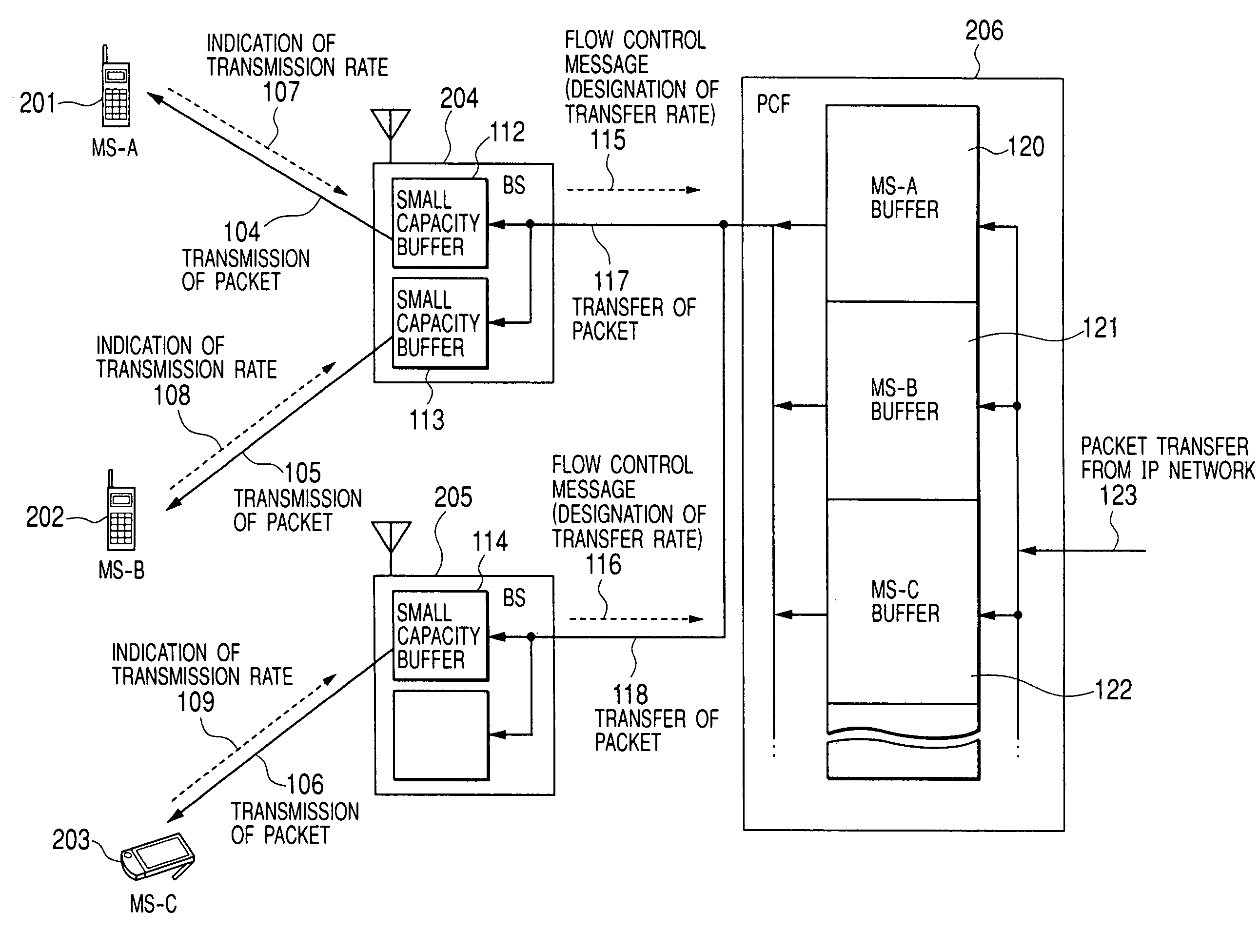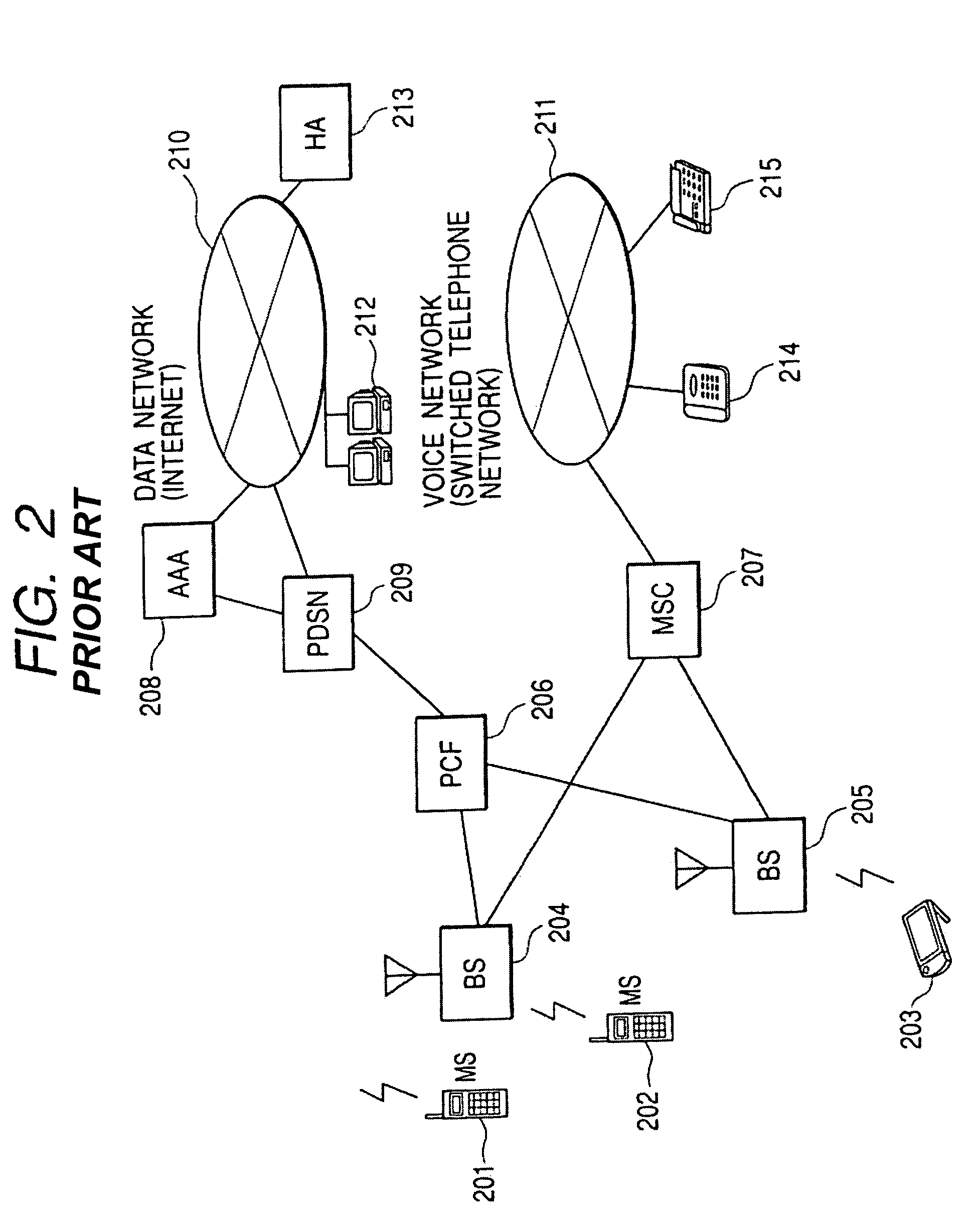Wireless base station and packet transfer apparatus for dynamically controlling data transmission rate
a dynamic control and data transmission technology, applied in data switching networks, instruments, frequency-division multiplexes, etc., can solve problems such as unrealistic, increased costs, and difficulty in determining a proper buffer size, and achieve the effect of maximization
- Summary
- Abstract
- Description
- Claims
- Application Information
AI Technical Summary
Benefits of technology
Problems solved by technology
Method used
Image
Examples
first embodiment
[0062]FIG. 1 shows an outline of the packet transfer control according to the invention.
[0063]A group of packet 123 sent from an IP network to a mobile station are once buffered by the PCF node 206, transferred to the base station 204 or 205 accommodating destination mobile stations, and transferred from the base station 204 to the mobile station 201 or 202 or from the base station 205 to the mobile station 203. As shown in the diagram, the base stations 204 and 205 have buffers 112 to 114 for temporarily storing received packets. Each of the buffers is of a very small capacity which is the minimum required for scheduling transmission on a radio channel or re-transmitting packets in the event that a transfer error occurs in the radio channel. The speed difference between the radio channel and the IP network is absorbed by using buffers 120 to 122 provided for the PCF node 206. By absorbing the speed difference at the PCF node, it becomes unnecessary to calculate the proper buffer si...
second embodiment
[0124]the invention will now be described.
[0125]FIG. 20 shows an outline of the second embodiment of the invention. In the second embodiment, mobile stations are grouped into rate classes according to current average values of the forward link transmission rates. In the base station 204, buffers for temporarily storing packet data to be transmitted to mobile stations are assigned to each of the groups. A packet transferred from the PCF node to the base station is temporarily stored in a buffer assigned to the group to which the destination mobile station of the packet belongs.
[0126]Each the time the received packet from the PCF node 206 is stored, the free space of the buffer in the base station decreases. When the transmission of packets to the mobile station is completed, the free space of the buffer increases. In the second embodiment, the base stations 204 and 205 notify the PCF node 206 of the free space of the buffer in each of the groups as “window size”, thereby performing t...
PUM
 Login to View More
Login to View More Abstract
Description
Claims
Application Information
 Login to View More
Login to View More - R&D
- Intellectual Property
- Life Sciences
- Materials
- Tech Scout
- Unparalleled Data Quality
- Higher Quality Content
- 60% Fewer Hallucinations
Browse by: Latest US Patents, China's latest patents, Technical Efficacy Thesaurus, Application Domain, Technology Topic, Popular Technical Reports.
© 2025 PatSnap. All rights reserved.Legal|Privacy policy|Modern Slavery Act Transparency Statement|Sitemap|About US| Contact US: help@patsnap.com



